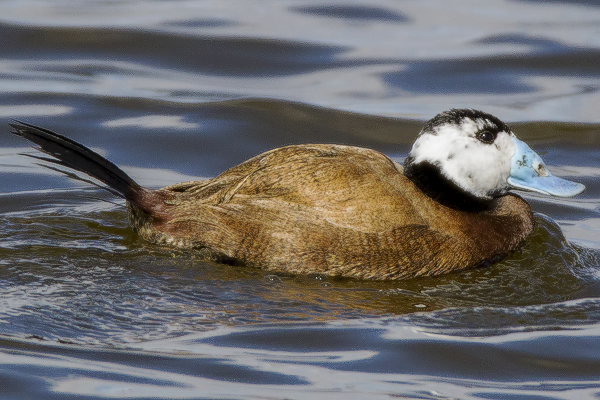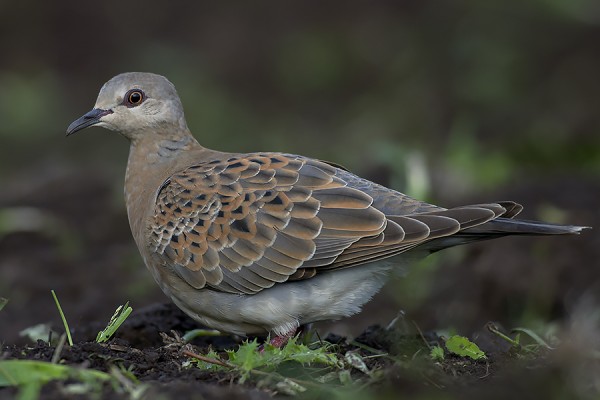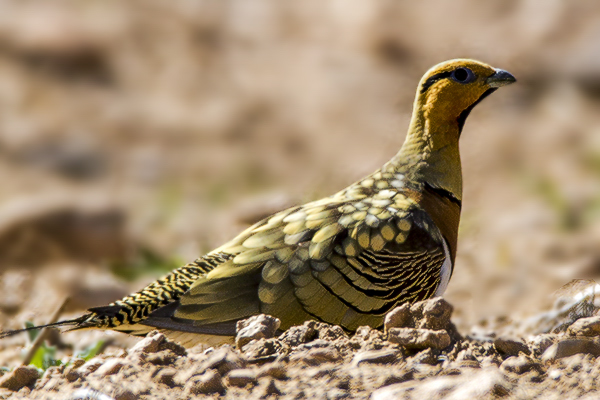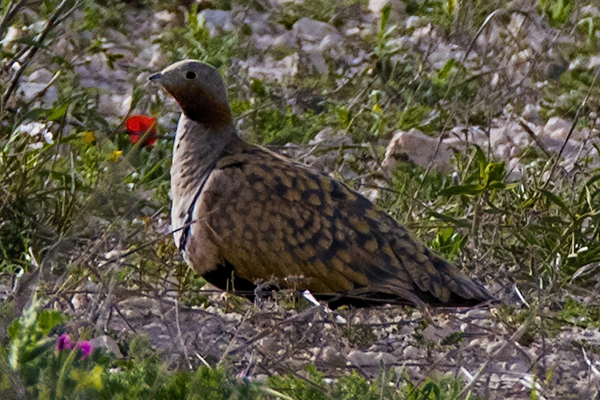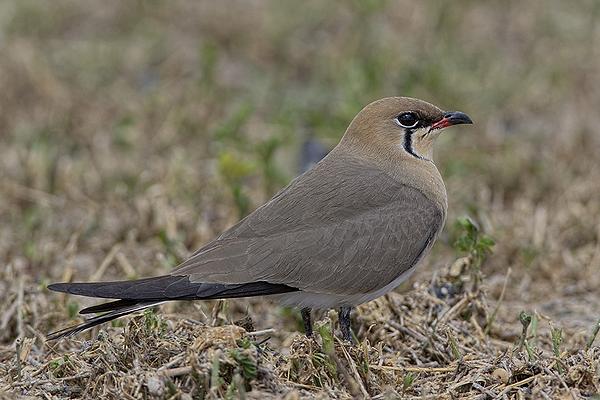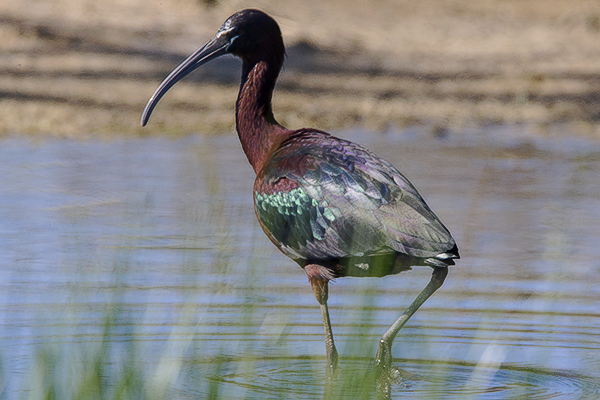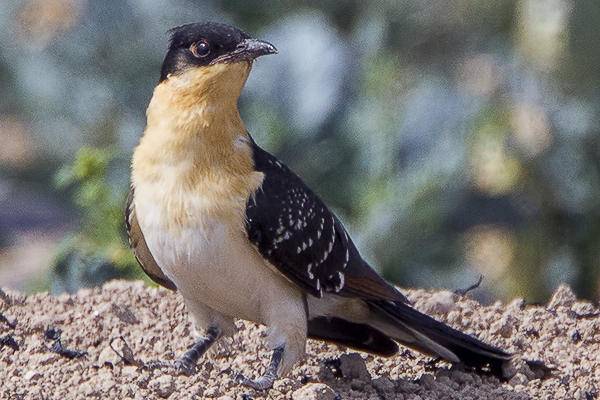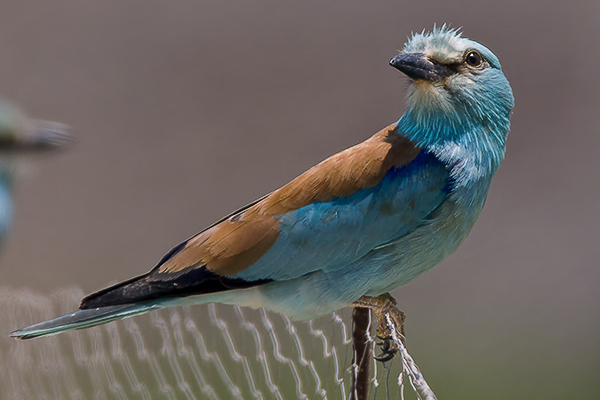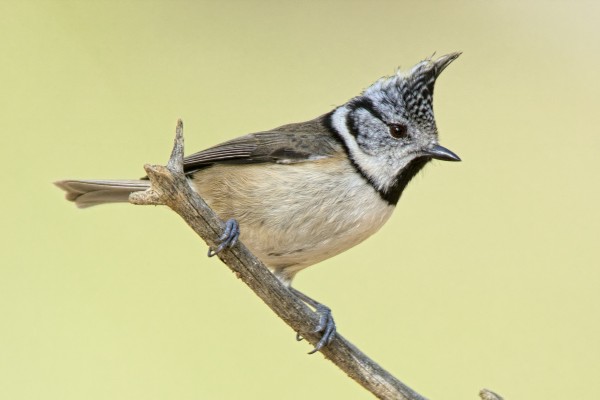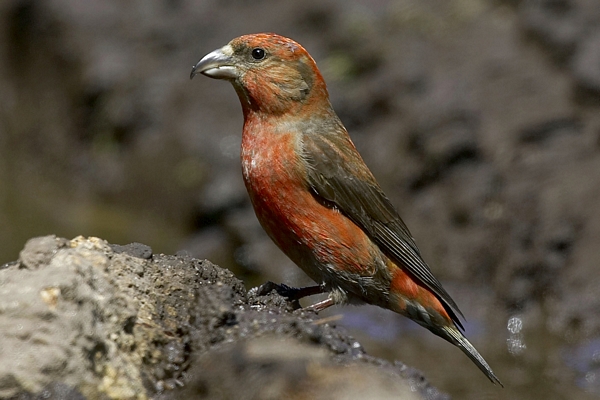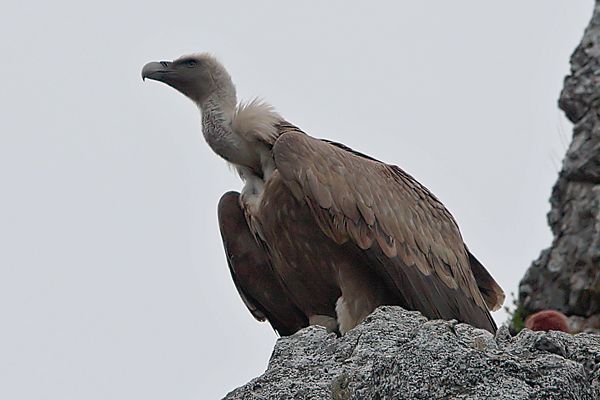Introduction
This was my third visit to Alicante in as many years and the second time that I’d birded with Bryan Thomas of Costa Blanca Bird Club. Indeed, Bryan and myself have now become firm “birding buddies” and the purpose of this trip was as much about spending some leisure time birding with Bryan as it was about doing a final recce in preparation for a Bargain Birding Club group I will be bringing out later in the year. Bryan and his wife Trish were the perfect hosts and I look forward to the opportunity to return the gesture back in the UK. Most photos in this trip report were taken by myself but Bryan kindly donated some of his own which I have attributed ‘BT’ where appropriate. (Editor’s note – photos from Bryan Thomas’s galleries are used here, visit the Bargain Birding Club website to see the full range of Richard’s photos.)
Sunday 7th June 2015
The alarm went off at 4.30am. I was dressed and out of the house by 5am and en-route to Gatwick for my 8.20am departure to Alicante with Monarch. After collecting the hire car from Centauro I was at Bryan’s by 2.30pm, and by 4pm we were out birding at ‘The Clot’ – Bryan’s local patch.
First birds for the trip list seen from the pool hide were Coot, Moorhen, Red-crested Pochard, Little Grebe and Mallard. A female Black-winged Stilt was busy adding sticks and stones to strengthen her raised island nest which contained 3 eggs, visible when she did a quick shufty, stretching then re-folding her over-sized bright red legs. The male was close by feeding in the shallows. Pallid Swifts, House Martins and Barn Swallows all screamed overhead, Serin and Goldfinch sang from the bushes and a Great Reed Warbler belted out his song from the top of a tall reed stem. The scratchy song of Sardinian Warbler confirmed that it was great to be back in Spain.
As we walked around to the raised observation platform on the opposite side of the pool, we picked up Zitting Cisticola, Spotless Starling, Woodpigeon, House Sparrow and Blackbird. Then not one but four White-headed Duck emerged from the reeds – a pair with two offspring. Too distant to photograph so a moment just to observe and take in through the bins. We were only distracted when a Purple Swamphen ran from one side of the reeds to the other. Moving on towards the back of the reserve we added Little Owl, Avocet, White Wagtail, Jackdaw, Iberian Green Woodpecker, Linnet and Red-rumped Swallow.
We then left ‘The Clot’ and headed for the nearby Carabassi Woods. Our target bird amongst the pines was Rufous Bush Robin … a bird that had evaded us when we searched for it at this spot last year. Again it proved elusive but our disappointment was somewhat comforted with great close up views of two Red-necked Nightjar that we flushed accidentally as we walked along the pine needle carpeted paths. We also added Yellow-legged Gull and Spotted Flycatcher to the day list.
We gave up on the robin and took a drive around the back of ‘The Clot’ in search of Turtle Dove – a lifer for me. Here, albeit the briefest of glimpses, we were successful as a distant pair of doves raced across the sky and disappeared over the horizon. As we scanned hoping in vain for a return fly-past, we did see Hoopoe, Southern Grey Shrike and our first European Bee-eaters of the trip. As time was getting on, we retired for a few beers and a delicious chicken salad prepared by Trish, followed by a few more beers before calling time at midnight as we had an early start tomorrow.
Monday 8th June 2015
An early 6am start saw us leaving the environs of Alicante and heading inland to Alamnsa in the Provence of Albacete, an area of arable farmland and a new site for me. Here we added Calandra Lark, Thekla Lark, Crested Lark, Stone Curlew, Woodchat Shrike, Mistle Thrush and Corn Bunting.
We moved on to the steppe area at Yecla in Murcia and by criss-crossing the farm tracks we picked up Great-spotted Cuckoo, Carrion Crow and Short-toed Lark – all of which were on Bryan’s side of the car so he bagged the best photos. The balance was soon restored with a pair of Black-bellied Sandgrouse crouched down low in the long grass just a few feet from my side of the car! We then drove on towards a remote farm which was home to a small colony of Lesser Kestrel. We spent a wonderful 30 minutes watching male and female kestrels catching and de-winging dragonflies before taking them back to the nest site under the terracotta roof tiles. Overhead a lone Golden Eagle soared high in the sky and a pair of Pin-tailed Sandgrouse flew past at pace.
At 11am we stopped to have a sandwich and reflect on just how lucky we had been to see the Black-bellied Sandgrouse on the ground at such close quarters. Suitably nourished we drove on past Casa Alaron winery, stopping to observe Red-billed Chough feeding in the fields, and a Black-eared Wheatear and Rock Sparrow perched on irrigation jets. At 1pm we drove to Bonete for a ‘pick-me-up’ coffee stop before heading to the steppe area near Estacion. The golden fields of almost ripe barley looked fantastic blowing in the wind but proved impossible in locating Great Bustard. The only new bird seen here was Northern Wheatear.
We then continued on the minor road to Higueruela stopping at a small pine wood referenced in Graham Crichell’s book as a good place for migrants. However, the only birds we saw on our stop here were Common Buzzard, Jay and Mistle Thrush. A singing Nightingale was heard briefly. We pushed on to a small copse of poplar trees which produced a magnificent male Golden Oriole, Linnet, Iberian Green Woodpecker and Bonnelli’s Warbler – my second ‘lifer’ of this trip.
With the time approaching 3pm we pushed on to the seasonal lagoons on the plains of Corral Rubio. From the road bridge over-looking the pools we observed five Marsh Harriers hawking over the reedbeds. The pools themselves hosted Greater Flamingo, Black-winged Stilt, Black-headed Gull, Yellow-legged Gull, Shelduck, Avocet and Lapwing. We then drove on to Petrola Lagoon where we added Gull-billed Tern, Black Tern (my third ‘lifer’ of this trip) and Grey Heron. This has to be one of my favourite places to bird watch in Spain as something unusual always turns up and birding from the car allows great close up views.
As the clock turned 5pm we decided to do one final recce of the arable fields which did eventually give up two very distant Great Bustard and a Red-legged Partridge. A 6pm coffee stop at Bonete service station on the A31 provided the necessary caffeine fix for the drive back to Alicante.
Tuesday 9th June 2015
At 8am we set off for the local reserve of El Hondo near Elche. As we drove the back roads out of Gran Alicant we picked up Roller, Cattle Egret, Squacco Heron and Little Owl.
At San Felipe Visitors Centre (N 38 11 16; W 0 47 27) I got my first view of the new boardwalk that had been constructed over the lagoon. From here we got terrific views of Collared Pratincole flying overhead back and forth from the reserve to nearby fields. Other birds of note seen from this vantage point included Glossy Ibis, Whiskered Tern, Little Tern, Purple Heron, Mediterranean Gull, Little Ringed Plover, Kentish Plover and Red-knobbed Coot. We moved on to the hide over-looking the Black-headed Gull and Avocet colony. Surprisingly this was the first time that Bryan had seen Black-headed Gull chicks, yet back home they breed so readily on the North Kent Marshes. A pair of Marbled Duck landed on the water but swam frustratingly out of sight. A Black-crowned Night Heron flew overhead and a more confiding Great Reed Warbler posed for photographs. Other birds of note included Iberian Stonechat, Common Kestrel, Pochard, Red-crested Pochard, Shelduck and Purple Swamphen.
At noon we left El Hondo reserve in search of flooded fields. However, it was cereal harvest time so we didn’t repeat last years spectacle of fields full of Ibis, Egrets and Herons. We had to be content with a single field containing Cattle Egret following a tractor on the look out for insects and frogs. On then to El Pinet lagoon where the birds were somewhat distant. Amongst the Greater Flamingo, Little Term, Avocet and Black-winged Stilt we added Common Tern to our trip list.
Final stop for today was Santa Pola saltpans. In the layby by the tower a Collared Pratincole amazingly landed right in front of us. I went into auto-pilot with my camera before realising that Bryan was screaming “open the ******* car” at me as his own camera was locked in the boot! Luckily we both got great shots and once we’d stopped laughing we observed Slender-billed Gull.
Wednesday 10th June 2015
An early 6am start saw us on the road heading for Guadalentin Valley, a new location for me and so I had higher than usual expectations. We arrived just after 7.15am and as soon as we left the main road and started criss-crossing the service roads and farm tracks we were rewarded with good views of Great Spotted Cuckoo, Hoopoe and Roller.
However, our initial excitement steadily eroded as the next few hours produced very few birds, and those we did see were the commoner species such as Pallid Swift, Crested Lark, Little Grebe, Black-winged Stilt, Zitting Cisticola, Jackdaw, Carrion Crow, Collared Dove and Woodpigeon. We decided to backtrack somewhat to check out an area of low-growing dense shrub. After an hour of intensive looking we did finally manage to get fleeting glimpses of Spectacled Warbler and Iberian Stonechat. At 11am we made the decision to move on to Sierra Espuna – another new location for me. En-route Tree Sparrow was the only new bird. We stopped at the café half way up Sierra Espuna, hoping for a glimpse of Wild Boar which are known to frequent this picturesque picnic spot. Alas, at the time of our visit the boar kept a low profile.
We did get better luck ‘phishing’ in the woods. In fairly quick succession we locked on Crested Tit, Coal Tit, Great Tit, Firecrest, Crossbill and Robin. Crested Tit was a ‘lifer’ for me, having dipped on this bird twice before in Portugal and Greece. We paid a visit to the historic ‘Ice Caves’. Amongst the stone ruins we spotted a lone Black Redstart. We continued up the windy mountain road to the summit which afforded spectacular views of the valley below. Bird-wise, the only sightings of note were Red-billed Chough and Chaffinch. With the time rapidly approaching 5pm we called it a day and headed back to Gran Alacant.
Thursday 11th June 2015
We left Alicante at 6.45am for the short (35 minute) drive to Maigmo Mountain. In the pine woods on the lower slopes we quickly picked up Crossbill, Crested Tit and Serin. Yesterday’s ‘lifer’ (Crested Tit) was rapidly turning into a staple sighting – how wonderful is the world of birding! Other birds of note as it started to rain included Mistle Thrush, Coal Tit and a singing Wren. At 10am, and with the rain getting steadily heavier, we decided to drive up the windy mountain road to Font Roja (N 38 39 45, W 0 32 22).
As we reached the visitors centre car park at the summit the weather closed in and obscured what would have been a wonderful panoramic from the viewing platform. As our windscreen steamed up and the rain forecast to last the day, we took stock of the situation and quickly decided to head back down to the Costa Blanca coast.
First stop was Santa Pola where we picked up Great Crested Grebe. By 2pm we arrived at La Mata in search of another ‘lifer’ for me in the form of Black-necked Grebe. Alas, no ‘BNG’ but we did pick up Long-tailed Tit and Iberian Green Woodpecker. We also amused ourselves feeding Iberian Red Squirrels peanuts before setting off to a site in Torreveja (N 37 57 57; W 0 43 37) that delivered Azure-winged Magpie and Ring-necked Parakeet. Last stop was the orange orchards at Los Balcones which produced our target (albeit distant) sighting of Montagu’s Harrier.
Friday 12th June 2015
At 6.30am we were on the road to El Hondo for a return visit to San Felipe Visitor Centre. Having already had our fill of Greater Flamingo, Marbled Duck, White-headed Duck, Collared Pratincole, Whiskered Tern, Little Tern, Black-crowned Night Heron and Squacco Heron on our visit earlier in the week, we had to be content with just one new bird for the trip list in the form of Bar-tailed Godwit. We did observe some rather unusual behaviour by the resident House Sparrows which were catching dragonflies, taking them to the boardwalk to de-wing them, and then flying off to their nest site. Presumably the wingless prey were more palatable to their hungry chicks. At 9.30am we set off to the Griffon Vulture feeding site at Sant Cristofol (N 38 42 28; W 0 30 49) in the Parc Natural de la Serra de Mariola. Here we enjoyed amazing views of a colony of c. 20 Griffon Vultures roosting on a cliff edge before taking to the air and gliding directly over our heads. Adult males of this magnificent bird of prey have a wingspan of up to 2.8m and weigh up to 13kg! I personally could have stayed all day watching the vultures but we still had other sites to visit. I made a note to contact the warden ahead of my ‘Bargain Birding Club’ group visit in September, in the hope of booking a talk and a live feeding session to enhance the experience even further.
On the way down the mountain we had brief glimpses of Short-toed Treecreeper and Spectacled Warbler and heard Woodlark. The air was thick with the smell of Pine and Thyme. Santolina and Potentilla flowers were attracting an assortment of butterflies including Swallowtail and Grayling. At 1pm we left Sant Cristofol, turned left and drove past an outdoor natural spring-fed swimming pool to a small bar / café in the shade at Mariola. Here we enjoyed an ice cream watching Spotted Flycatcher, Coal Tit, Chaffinch and Robin. We were soon back on the road heading down the mountain with fantastic views of Alcoy in the valley bottom to our right. At a layby on the left side of the road we spotted a sign displaying a familiar yellow and red bird symbol. We parked up and walked in the direction of Barranc del Clint towards an Oleander bush in full flower that was literally alive with butterflies. Here we marvelled at Swallowtail, Cleopatra, Marbled White, Painted Lady, Clouded Yellow, Common Blue and Pearly Heath butterflies. At 2pm we headed back to Alcoy, stopping to photograph a Scare Swallowtail with a damaged wing, before returning to Alicante.
After showering and packing my suitcase, I had time for one last beer before bidding farewell to Bryan and Trish before returning my hire car and boarding my 8.20pm flight back to Gatwick.
Another fabulous trip to Spain which produced 114 birds (including 4 lifers) and 12 butterflies.
Useful references
• Costa Blanca Bird Club (www.costablancabirdclub.com)
• Birdforum (www.birdforum.net/opus/)
• A Birdwatching Guide to the Costa Blanca (Malcom Palmer, 1994)
• Where to watch birds in Southern Costa Blanca and surrounding areas (Graham Critchell)
• Field Guide to Birds of Britain & Europe (Paul Sterry, 2010) ISBN 978-0-7495-6408-7
ALICANTE LIST – 114 BIRDS (7th – 12th June 2015)
Grey Heron, Black Tern, Little Ringed Plover, Blackbird, Purple Heron, Whiskered Tern, Kentish Plover, Mistle Thrush, Squacco Heron, Great Bustard, Lapwing, Blue Rock Thrush, Black-crowned Night Heron, Black-bellied Sandgrouse, Collared Pratincole, Golden Oriole, Little Egret, Pin-tailed Sandgrouse, Black-winged Stilt, Nightingale, Cattle Egret, Stone Curlew, (Pied) Avocet, Sardinian Warbler, Greater Flamingo, Red-legged Partridge, Bar-tailed Godwit, Spectacled Warbler, Glossy Ibis, Red-necked Nightjar, Iberian Stonechat, Cetti’s Warbler, Little Grebe, Great Spotted Cuckoo, Linnet, Great Reed Warbler, Great Crested Grebe, Common Cuckoo, Serin, Bonelli’s Warbler, Coot, Iberian Green Woodpecker, Skylark, Firecrest, Red-knobbed Coot, Hoopoe, Crested Lark, Long-tailed Tit, Purple Swamphen, Short-toed Treecreeper, Thekla Lark, Great Tit, Moorhen, Eurasian Roller, Calandra Lark, Crested Tit, Common Pochard, European Bee-eater, Woodlark, Coal Tit, Red-crested Pochard, Spotted Flycatcher, Black-eared Wheatear, House Sparrow, Mallard, Southern Grey Shrike, (Northern) Wheatear, Tree Sparrow, Shelduck, Woodchat Shrike, Magpie, Rock Sparrow, Marbled Duck, Little Owl, Azure-winged Magpie, Chaffinch, White-headed Duck, Common Kestrel, Red-billed Chough, Greenfinch, Black-headed Gull, Lesser Kestrel, Jay, Goldfinch, Yellow-legged Gull, Marsh Harrier, Jackdaw, Zitting Cisticola, Slender-billed Gull, Montagu’s Harrier, Carrion Crow, Corn Bunting, Audouin’s Gull, Common Buzzard, Turtle Dove, Robin, Mediterranean Gull, Barn Swallow, Rock Dove, Wren, Gull-billed Tern, Red-rumped Swallow, Collared Dove, Spotless Starling, Common Tern, House Martin, Woodpigeon, White Wagtail, Little Tern, Pallid Swift, Common Crossbill, Sandwich Tern, Common Swift, Ring-necked Parakeet.
BUTTERFLIES
Swallowtail, Scare Swallowtail, Cleopatra Clouded Yellow, Marbled White, Small White, Meadow Brown, Small Blue, Pearly Heath, Grayling, Painted Lady, Geranium Bronze.
OTHER NOTABLES
Iberian Red Squirrel, Lizard.
